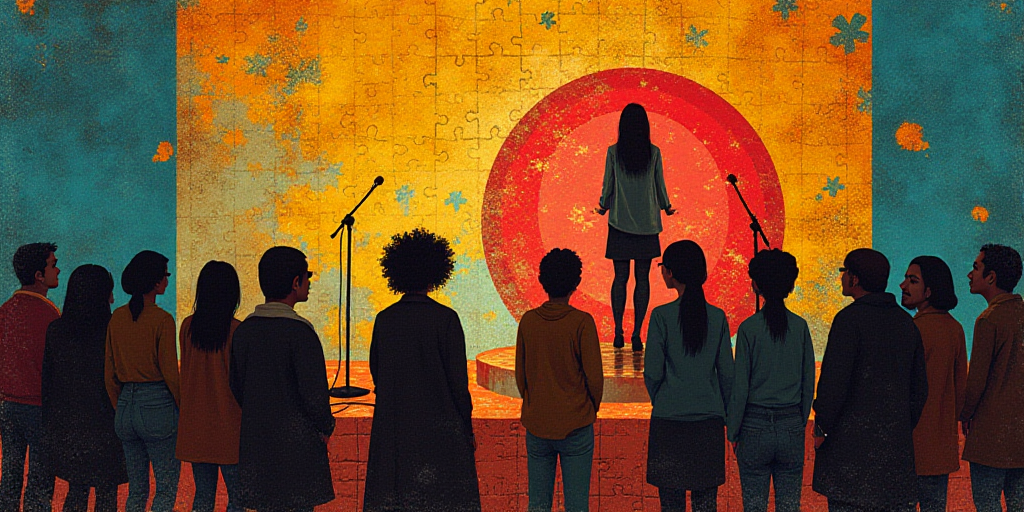Museum Directors and Lotery National’s Head Unite for Cultural Recognition
In the heart of Coyoacán, at the Diego Rivera Anahuacalli Museum, a ceremony was held on Wednesday to unveil the lottery ticket for Sorteo Superior No. 2851, dedicated to both Frida Kahlo and Diego Rivera museums. This event celebrates the legacies of two pivotal figures in Mexican art history.
Key Figures and Their Roles
- María Teresa Moya Malfavón: Director of the Diego Rivera Anahuacalli Museum, reaffirmed the museum’s role as a living space honoring Diego Rivera’s vision.
- Perla Labarthe: Director of the Frida Kahlo – Casa Azul Museum, celebrated the unveiling as a living tribute to Mexican identity, resilience, and inspiration.
- Olivia Salomón: Director General of Lotería Nacional, emphasized the cultural significance of both museums and their representation of a pluralistic, combative, mestizo, and rebellious Mexico.
- Jessica Serrano Bandala: Director of Education Financial and Cultural Fomento at Banco de México, highlighted the bank’s commitment to preserving Frida Kahlo and Diego Rivera’s legacies through cultural trusts.
The Unveiling and Its Significance
During the ceremony, Olivia Salomón mentioned Diego Rivera’s iconic design for the Revolutionary Lotery Sorteo in 1941 and Frida Kahlo’s enduring influence as a symbol of strength for women worldwide. She also noted that the Lotery National follows President Claudia Sheinbaum’s vision, prioritizing culture and art as integral to public life and social consciousness.
Museum Directors’ Statements
María Teresa Moya Malfavón reaffirmed the Diego Rivera Anahuacalli Museum’s role as a living space embodying Rivera’s vision of integrating art, nature, and architecture. Perla Labarthe praised the unveiling as a living memory act and tribute to Mexican identity, resilience, and Frida Kahlo’s inspiring force.
The Lotery Ticket and Its Details
For Sorteo Superior No. 2851, the top prize is 17 million pesos in two series. The total distributable amount is 51 million pesos, with premiums available across more than 11,000 outlets nationwide and online at alegrialoteria.com. The lottery drawing will be streamed live on the Lotery National’s YouTube channel, Sorteos Tradicionales.
A Brief History of the Museums
The Frida Kahlo Museum, located in Coyoacán, is where the artist was born, lived, and passed away. Known as “La Casa Azul” for its distinctive blue color, this family home was transformed by Frida and Diego into an art-filled residence reflecting Mexican traditions and daily life. Since its opening as a museum in 1958, the Casa Azul has been a place of connection with Frida Kahlo’s personal space, preserving her sensitivity, pain, love, and resilience through photographs, artworks, letters, and personal belongings.
The Diego Rivera-Anahuacalli Museum, situated in San Pablo Tepetlapa, was envisioned by the muralist as an art temple. Constructed from volcanic rock in the Pedregal, this monumental building showcases Rivera’s deep admiration for pre-Hispanic art and Mexico’s cultural roots. Its unique design blends Mesoamerican and modernist elements, creating a dialogue between the past and present.
Beyond its architecture, the Anahuacalli houses over 50,000 pre-Hispanic art pieces collected by Rivera throughout his life. Since its opening as a museum in 1964, it has been a dynamic space with contemporary exhibitions, festivals, workshops, creation labs, and events that strengthen the connection between the community, art, and natural environment.
Frida Kahlo and Diego Rivera not only shaped Mexican art history through their works but also passionately promoted Mexican identity, folk art, ancestral traditions, and the transformative power of art in society. Their deep involvement with social movements, advocacy for popular causes, and reclamation of the country’s cultural wealth through their art, aesthetics, and public life has left an indelible mark beyond the visual arts.
Their legacies have influenced music, fashion, literature, politics, and daily life for generations in Mexico and around the world. Today, Frida and Diego remain universal examples, with their heritage multiplied in museums preserving their memory and through their art’s connection to contemporary themes like equity, cultural roots, and individual expression.






